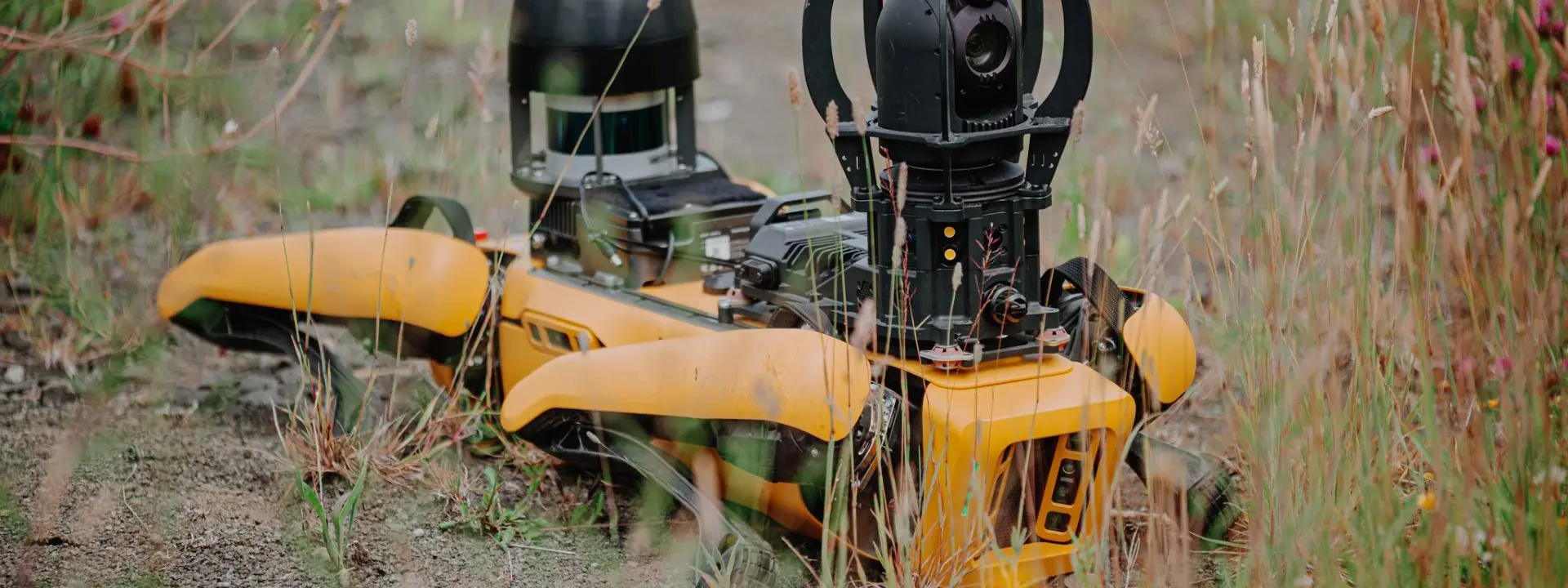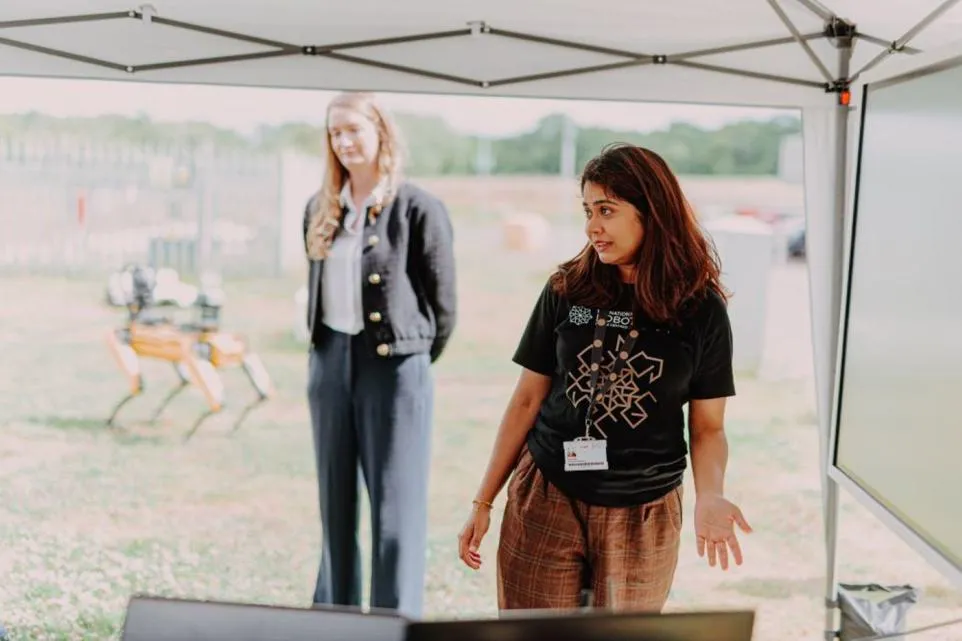The National Robotarium set to revolutionise the farming sector with 5G robotics

A partnership between Scotland's leading technology and agricultural research institutions is developing 5G-connected robotics applications that enable farmers to implement precision agriculture techniques while addressing rural connectivity challenges.
The collaboration between The National Robotarium at Heriot-Watt University, James Hutton Institute, The Scotland 5G Centre, Boston Dynamics, and Freshwave is advancing robotic systems that can perform precision farming tasks - including crop health monitoring, targeted fertiliser application, and soil condition assessment - through portable 5G private networks.
The technology addresses critical challenges facing modern agriculture, such as rising input costs, labour shortages, environmental regulations, and the need to increase food production while reducing environmental impact. Traditional farming approaches often involve uniform treatment across entire fields, but 5G-connected robotics enable plant-by-plant precision, applying resources only where needed.
The robotic systems use high-speed 5G connections to communicate with other robotic devices securely in real time as well as transmit detailed information about crops, soil conditions, and growing environments, enabling farmers to make informed decisions based on current field conditions.
We've successfully shown that portable 5G networks can provide the connectivity needed for real-time robotic operations in agricultural settings. The integration of these technologies creates opportunities for precision farming that weren't previously possible in areas with limited connectivity.
A key breakthrough has been addressing connectivity limitations in rural areas. Agricultural operations requiring data-intensive robotic applications often face inadequate mobile network coverage and bandwidth constraints. The partnership has worked with portable 5G private networks that can be rapidly deployed on farms, providing the high-speed, low-latency connectivity essential for real-time robotic operations.

The robotic systems can stream high-definition video, generate detailed field mapping and, with under-development visual recognition systems, identify issues such as disease, pest infestations, or water stress significantly earlier than traditional monitoring methods. Applications that previously required expensive specialised equipment, technical expertise, and optimal weather conditions can now be implemented more efficiently and cost-effectively.
With global food production required to increase by more than 50% by 2050 while reducing environmental impact, advanced agricultural technologies are becoming essential. The agricultural sector, which contributes £2.2 billion to Scotland’s economy, is positioned to lead development of practical precision farming solutions that address real-world operational challenges.
Following a demonstration of the 5G-connected robotics technologies at The National Robotarium, Ruth Plant, Project Manager, said:
“What's exciting about this project is seeing the technology develop from initial concept to working demonstration. We've successfully shown that portable 5G networks can provide the connectivity needed for real-time robotic operations in agricultural settings. The integration of these technologies creates opportunities for precision farming that weren't previously possible in areas with limited connectivity.
“This partnership demonstrates exactly what the National Robotarium was designed to achieve - bringing together leading academic research, innovative companies, and industry expertise to develop practical solutions to real-world challenges. Our facility provides the collaborative environment where these breakthrough technologies can be developed, tested, and demonstrated to the partners and stakeholders who can help bring them to market.”
Andrew Christie, agritech specialist at The James Hutton Institute, said:
“As an evolution of precision farming technology being used in modern agriculture, robotics are a next step in the progression towards data driven farming practices, but a barrier to uptake has been the speed and reliability for real time communication and a need for manual intervention for data processing.
“With the integration of 5G private networks in robotics we can address these issues enabling high volumes of data to be transmitted at low latency and allowing us to use our current equipment more effectively, whilst also enabling future progress in swarm robotics, real-time sensors for digital twinning and active data processing through cloud computing.
“The use of remotely deployable 5G private networks as showcased at The National Robotarium and The James Hutton Institute provides relevance to all rural settings, and agricultural businesses regardless of farm type.”

Ian Sharp, Head of Delivery at the Scotland 5G Centre, said:
“The Scotland 5G Centre (S5GC) is focussed on enabling Scotland to unlock the benefits of advanced wireless connectivity, so we are very pleased to play an active role in this partnership.
“The collaboration highlights clearly how advanced wireless communications (5G) can enable new and exciting applications of robotics in an agricultural setting. It’s easy to see from the project how the 5G connected robotics can provide new opportunities to increase productivity and reduce costs.
“It’s also important to note that the partnership itself highlights the collaborative nature and strength of Scotland’s innovation ecosystem, particularly in working closely with industry partners.
“We were able to seed this project through use of funding from our Innovate UK Technology Mission Fund Programme. The IUK Programme ended in March 2025 and enabled a number of other 5G related projects, some of which continued the theme of addressing rural connectivity through the use of mobile 5G test networks deployed in harsh outdoor conditions.”
Tom Bennett, Chief Technology Officer at Freshwave, said:
“We’re proud to be enabling next-generation connectivity at the cutting edge of agritech research. Reliable, portable private 5G is unlocking new possibilities for robotics and automation, and we’re excited to support the National Robotarium as they help shape the future of sustainable agriculture alongside their partners and customers.”
Find out how 5G-connected robotics can help your business by visiting The National Robotarium website.